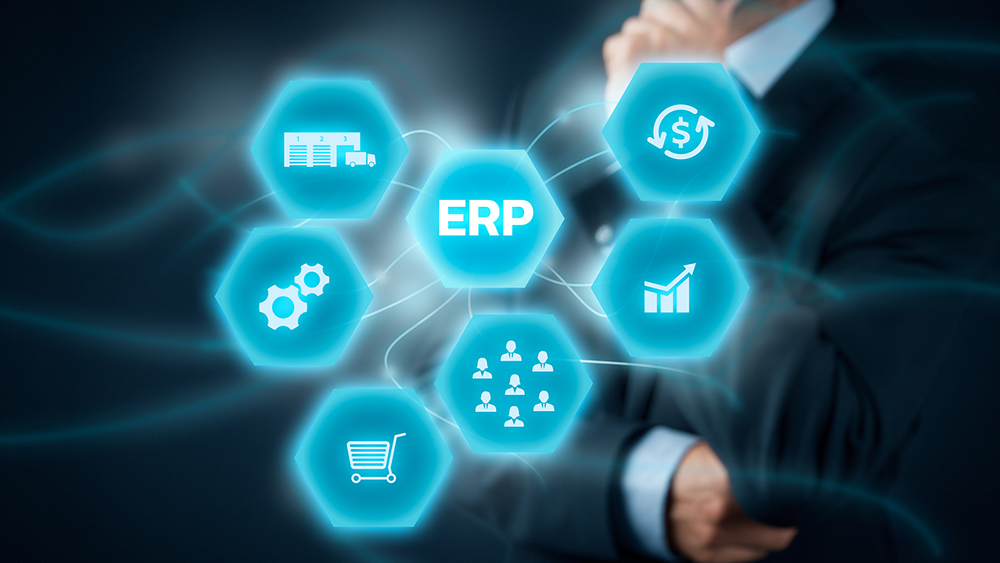NetSuite ERP review
NetSuite offers one of the best-known cloud ERP products: how does it shape up?

-
+
Scalable; Powerful, role-based dashboards; Excellent asset management tool
-
-
Opaque pricing policy
Over the past 15 years, NetSuite has grown from a single, pioneering, online accounting app into an encompassing suite that promises to manage all aspects of a business.
It's probably best to think of its NetSuite ERP (enterprise resource planning) cloud application as a sort of back office to your business. Through a series of modules sharing the same database, its core offering mixes the sort of standard accounting features you'll find in dedicated accounting apps such as the Salesforce-compatible Aqilla, together with stock and fixed asset management. But ERP also offers far more, including customer relationship management, sales and marketing and time-tracking activities.
As with most cloud apps, the hub of NetSuite ERP is a compact, customisable, real-time dashboard. Sensibly, its content is determined by your role, reflecting the fact that people often wear more than one hat in their business. At the top of the dashboard a toolbar links to the separate dashboards of the main sections; you just hover your mouse over the section to select one of its activities.
A sales rep's home dashboard focuses by default on leads and opportunities, and features an ever-present sub-toolbar under the main toolbar housing one-click links to new opportunities or sales orders screens. A financial controller's home dashboard on the other hand presents the latest company financial ratios and links to financial reports. You can quickly switch roles – and dashboards – from a drop-down menu. On balance, this role-based approach is a good thing, although because permissions – and therefore views – are role-based, it could mean having to switch between roles to see different information.
You can customise dashboards by adding, deleting or rearranging the portlets and can also create custom portlets – for example adding bespoke RSS or Atom feeds from a company feed.
Administrators – or others assigned sufficient permissions – can publish dashboards for particular roles, overwriting local variations. It's a useful way to ensure that everyone assigned the same role sees identical information.
Given the wealth of information available through these dashboards, it's reassuring to see that steps have been taken to avoid the risk of overloading the user information. Wherever we were in the app, we found ourselves turning to the toolbar's History tab with its drop-down access to your most recently-viewed screens. It's a simple, effective way to switch between sections. Even better is a search field at the top right that gives impressively speedy access to any record contained in NetSuite. You just type in the first couple of letters of 'ledger', for example, and a link appears in the suggestion box below to take you to the general ledger page.
Sign up today and you will receive a free copy of our Future Focus 2025 report - the leading guidance on AI, cybersecurity and other IT challenges as per 700+ senior executives
Most dashboards feature a key performance indicators (KPIs) portlet, which compares several important business metrics across two time periods. Many of the performance indicators have small pop-up trend graphs attached. This isn’t just visual frippery: they allow a richer visual indication of performance metrics, and rather than a stark two-period comparison, this can show monthly or annual trends. In many cases KPIs can be displayed visually in a separate KPI Meter portlet. This shows a snapshot illustration of KPIs such as actual against forecast performance or overdue cold call leads.
The KPIs themselves are all customisable. Assuming you have relevant permissions, you can quickly edit the default ones, adjusting threshold values or comparison ranges and even customising your own KPI.
The core of Netsuite ERP is its financial accounting module, which supports an unlimited number of general ledger accounts, sub-accounts, and accounting segments.
What’s notable about ERP’s here is that it isn't just multi-currency; it can also handle different legal entities within the same app, each of which can have its its own accruals policy or be answerable to its own regulatory environment. A single window can show a consolidated financial summary of all subsidiaries, with currencies converted automatically into a single base currency.
It's easy to drill down from the top-line information in a dashboard for audit trail purposes (a separate audit trail report will record all actions by users). For example if you're looking at the balance sheet, you can click through to see the assets or liabilities that make the totals up, right down to the individual transaction level. From there you can click through and examine related project details to check resources and contingencies. This capability isn't limited to the ledgers of course; the same drill-down technique works in all areas of NetSuite.
There is an exhaustive – and, predictably, customisable – set of more than 100 reports available. Data from these can be exported to CSV, Word, Excel or PDF through links at the bottom of the reports window. The reports can be easily filtered to adjust period or adjust the subsidiary context to only show results from a particular subsidiary.
Given that the mainstay of NetSuite's ERP business is wholesale distribution, it's no surprise that the core suite offers functions often posted missing in other accounting apps. One is an add-on inventory management module. The practical benefit is obvious here: when you create invoices, it's all linked to your stock, so you can see how many items you still have left for sale. But for larger, global businesses it means you can organise stock levels across multiple locations.
NetSuite offers excellent support for fixed asset management – normally another afterthought in accounting systems that frequently requires manual ledger adjustment or spreadsheet analysis. In ERP the entire fixed asset lifecycle is automated, from asset creation to disposal. It tracks the purchase of fixed assets via the purchase order – posting to the relevant expense account and then automatically accounts for depreciation through a choice of standard depreciation methods.
The big question for potential buyers might be how NetSuite fits in with third-party CRM products. It ticks boxes here too: it offers an API to allow it to connect to third-party services. But part of NetSuite’s value is its own scalability; the fact project management or CRM modules share the same underlying database as the accounting module will remove a lot of headaches for cloud admins. What we'd really have liked to see, though, is fully transparent pricing for individual modules.
Verdict
Well designed and easily customisable, NetSuite is a far more powerful and scalable offering than standard enterprise accounting cloud apps.
-
 Nutanix wants to help customers shore up cloud sovereignty
Nutanix wants to help customers shore up cloud sovereigntyNews New automation tools and infrastructure management capabilities look to tackle single-vendor dependency and shore up sovereignty requirements
By Ross Kelly Published
-
 The NCSC touts honeypots and ‘cyber deception’ tactics as the key to combating hackers — but they could ‘lead to a false sense of security’
The NCSC touts honeypots and ‘cyber deception’ tactics as the key to combating hackers — but they could ‘lead to a false sense of security’News Trials to test the real-world effectiveness of cyber deception solutions have produced positive results so far
By Emma Woollacott Published
-
 Can data center supply keep up with AI demand?
Can data center supply keep up with AI demand?News New research from Goldman Sachs points to a precarious balancing act for data center operators
By Emma Woollacott Published